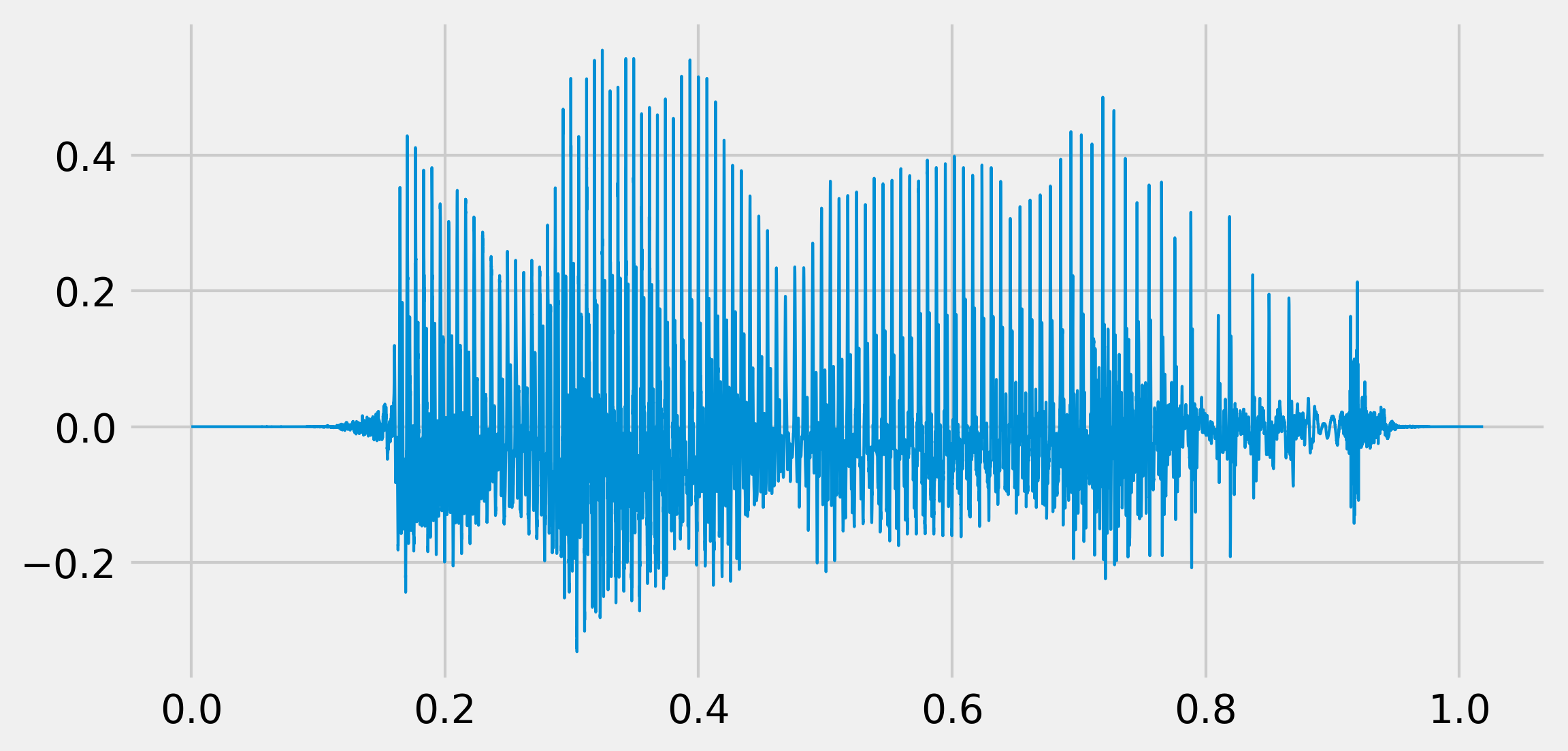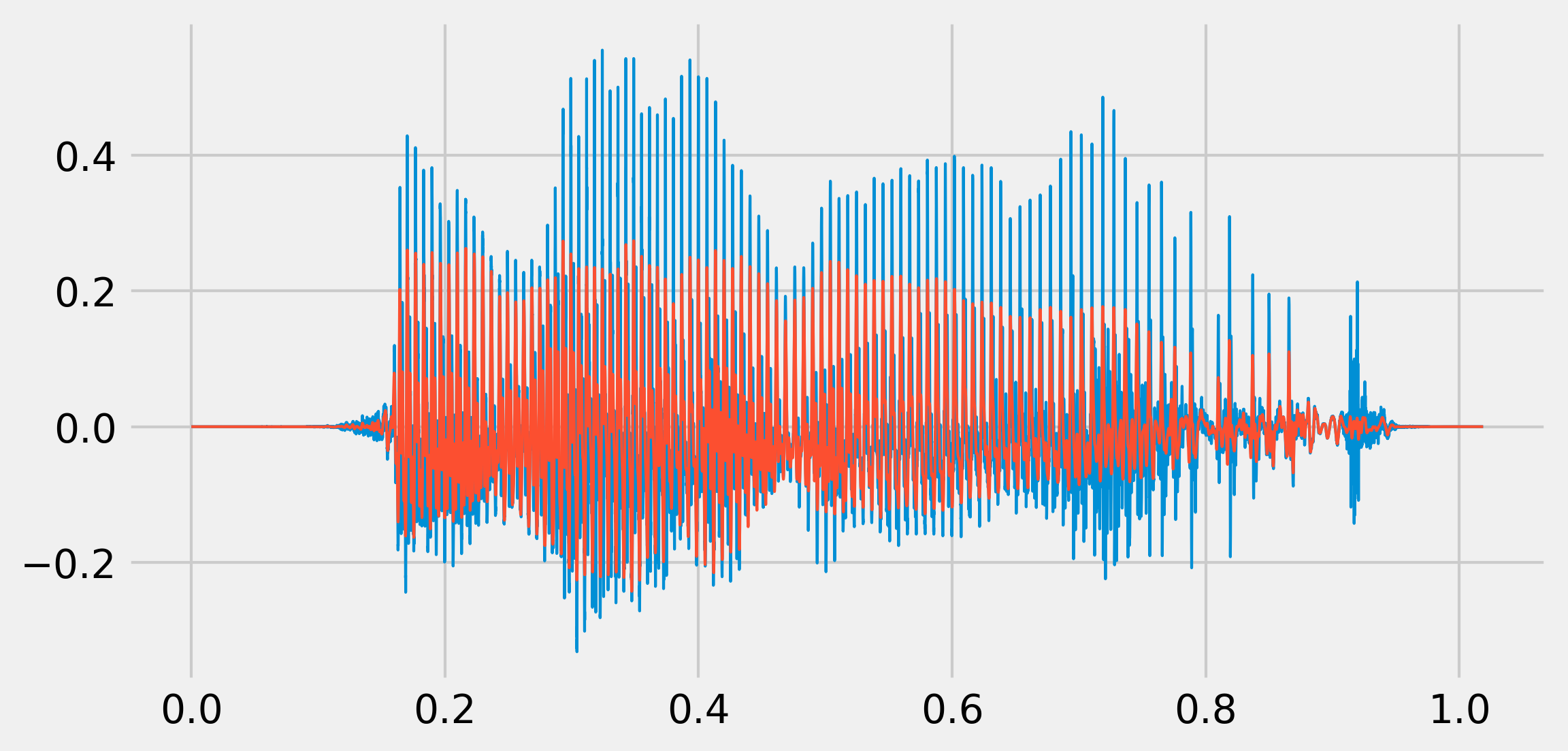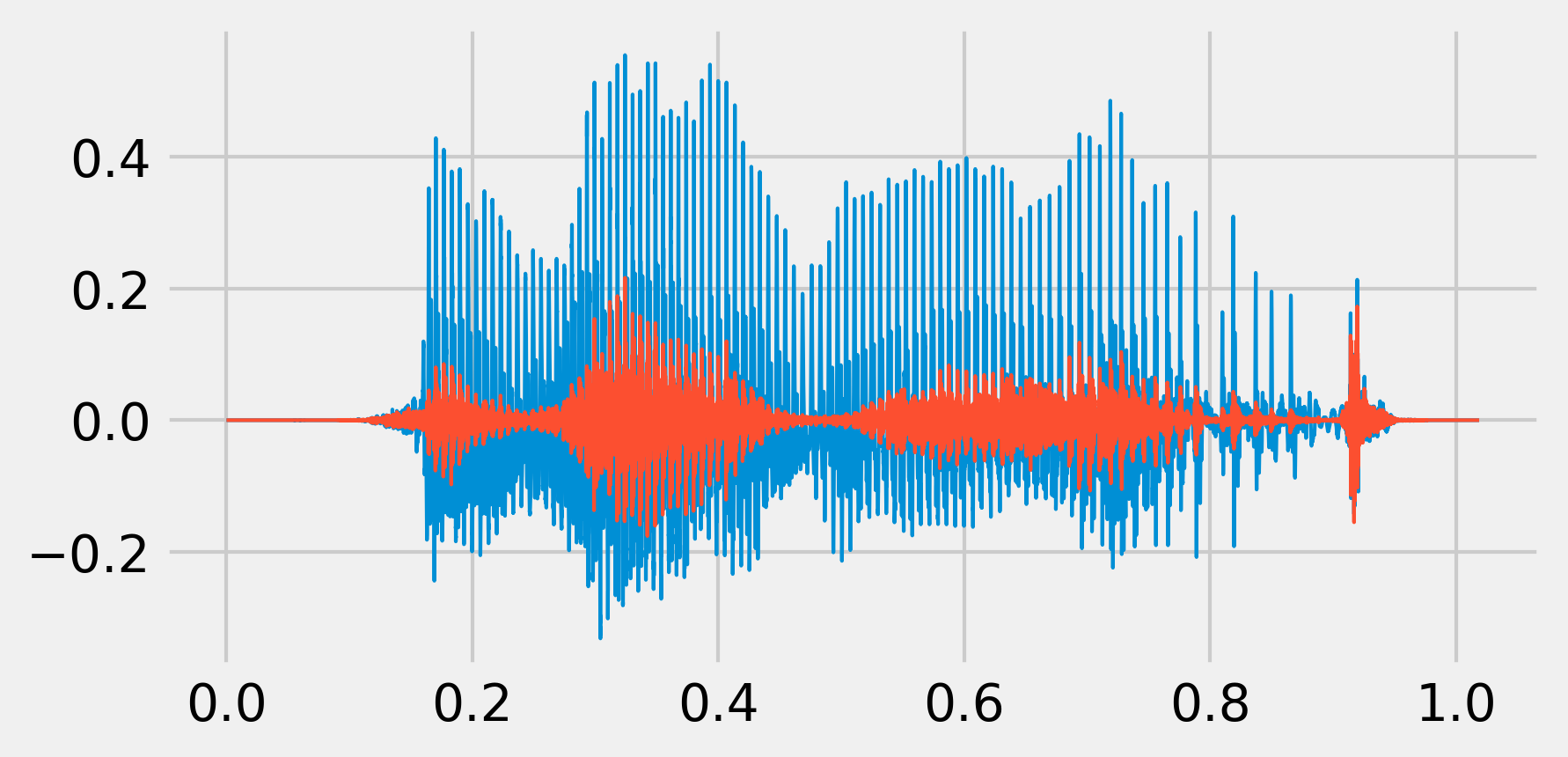Jupyter Snippet CB2nd 06_speech
Jupyter Snippet CB2nd 06_speech
11.6. Applying digital filters to speech sounds
from io import BytesIO
import tempfile
import requests
import numpy as np
import scipy.signal as sg
import pydub
import matplotlib.pyplot as plt
from IPython.display import Audio, display
%matplotlib inline
def speak(data):
# We convert the mp3 bytes to wav.
audio = pydub.AudioSegment.from_mp3(BytesIO(data))
with tempfile.TemporaryFile() as fn:
wavef = audio.export(fn, format='wav')
wavef.seek(0)
wave = wavef.read()
# We get the raw data by removing the 24 first
# bytes of the header.
x = np.frombuffer(wave, np.int16)[24:] / 2.**15
return x, audio.frame_rate
def play(x, fr, autoplay=False):
display(Audio(x, rate=fr, autoplay=autoplay))
url = ('https://github.com/ipython-books/'
'cookbook-2nd-data/blob/master/'
'voice.mp3?raw=true')
voice = requests.get(url).content
x, fr = speak(voice)
play(x, fr)
fig, ax = plt.subplots(1, 1, figsize=(8, 4))
t = np.linspace(0., len(x) / fr, len(x))
ax.plot(t, x, lw=1)

b, a = sg.butter(4, 500. / (fr / 2.), 'low')
x_fil = sg.filtfilt(b, a, x)
play(x_fil, fr)
fig, ax = plt.subplots(1, 1, figsize=(8, 4))
ax.plot(t, x, lw=1)
ax.plot(t, x_fil, lw=1)

b, a = sg.butter(4, 1000. / (fr / 2.), 'high')
x_fil = sg.filtfilt(b, a, x)
play(x_fil, fr)
fig, ax = plt.subplots(1, 1, figsize=(6, 3))
ax.plot(t, x, lw=1)
ax.plot(t, x_fil, lw=1)

from ipywidgets import widgets
@widgets.interact(t=(100., 5000., 100.))
def highpass(t):
b, a = sg.butter(4, t / (fr / 2.), 'high')
x_fil = sg.filtfilt(b, a, x)
play(x_fil, fr, autoplay=True)
